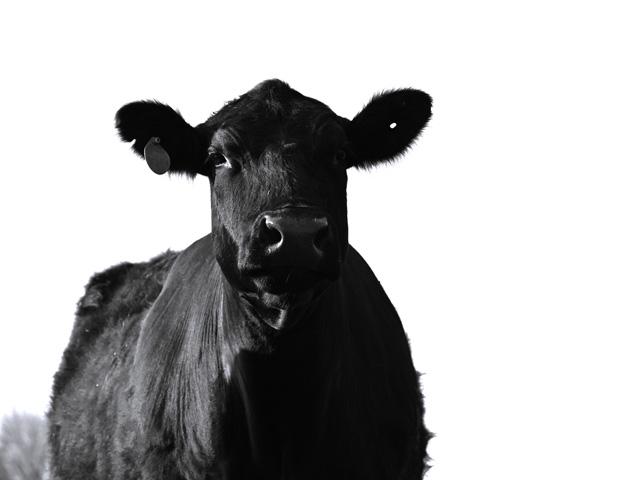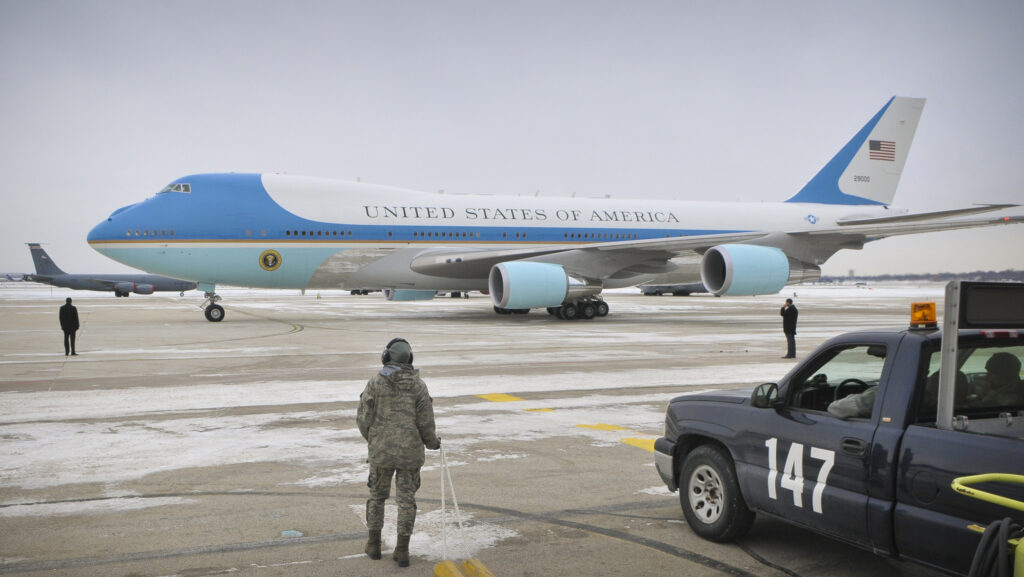
Stylist Highlights the Connection Between Self-Image and Spiritual Identity in New Initiative EIN News
source

The Mega Millions jackpot has reached $740 million, the eighth-largest in the game’s history and the biggest ever in the month of December.
To win the jackpot, you must match all six winning numbers in a drawing. To play, you pick six numbers from two different pools: five numbers from 1 to 70 and one number from 1 to 25, which is the gold Mega Ball.
>📺 24/7 Chicago news stream: Watch NBC 5 free wherever you are
But don’t expect to win, as the odds of taking home the jackpot are 1 in 302,575,350.
However, you’re much more likely to win a smaller prize, ranging from $2 to $1 million. The odds of winning any prize is 1 in 24, according to the lottery.
Here’s a look at the odds for each prize amount:
Mega Millions tickets cost $2 each (although they’ll be going up to $5 later in 2025). If there’s no winner, the jackpot will keep growing, as a portion of ticket sales is added ahead of each draw.
The next draw is Tuesday, Dec. 17 at 11 p.m. ET. If no one wins the prize, the jackpot will roll over to the next draw on Friday, Dec. 20 at 11 p.m. ET.
If you want to watch the draw live, check out the Mega Millions’ YouTube channel. Updates about winners are posted on the Mega Millions website on Wednesday and Saturday mornings after winning tickets have been verified.
Want to make extra money outside of your day job? Sign up for CNBC’s online course How to Earn Passive Income Online to learn about common passive income streams, tips to get started and real-life success stories.
Plus, sign up for CNBC Make It’s newsletter to get tips and tricks for success at work, with money and in life.

HOUSTON, Texas (KTRK) — With the holiday season in full swing, Houston's New Faces of Pride is hoping to channel some of that cheer to help some of our city's most vulnerable students.
Organizers for the city's newest LGBTQ+ Pride celebration will host a school supply drive Wednesday at George Country Sports Bar in Montrose.
From 6-9 p.m., the community is invited to drop off school supply donations to help LGBTQ+ students start their semester off on the right foot.
An Amazon wishlist has also been created for those who would like to give online.
The drive benefits students served by Houston nonprofit Out for Education, which has expanded inclusion by providing scholarships to LGBTQ+ students since 1999.
President Brandi Lira said these students often begin their college careers without a safety net that can mean the difference between graduation and dropping out.
"A lot of them either are not out or they gain the confidence to come out, and then their parents are either not supportive financially, not supportive in other ways, and so when it comes time to go into college, they may or may not have the financial backing they need," Lira said.
The school supply drive is only the first event of several planned to help support Out for Education's mission through the 2025 Pride season, president Bryan Cotton said.
"We simply want to help kids get an education," Cotton said. "We're not just a celebration organization. When we put this together, we looked at what we needed in the community, and it was support for our smaller organizations, (and) this year we went with one we felt so strongly about: Out for Education."
In its inaugural year, Houston's New Faces of Pride provided $20,000 in aid to Tony's Place and Grace Place, two nonprofits focused on serving the needs of homeless LGBTQ+ youth.
The organization said it hopes to help Out for Education scholarship recipients with the tools they need to make it across the graduation stage, and into positions of influence in their communities.
George Country Sports Bar is located at 617 Fairview St., in Montrose.
ABC13 is proud to be official media partner of Houston's New Faces of Pride.


December 16, 2024 – Palo Alto, California
Stanford University’s FDCI (Future of Digital Currency Initiative) and Eliza Labs, creators of the open-source Eliza agent framework, today announced a groundbreaking research partnership to explore how autonomous AI agents will transform digital currency systems.
The collaboration, set to begin in Q1 2025, brings together Stanford’s expertise in digital currency research with Eliza Labs’ cutting-edge capabilities in autonomous agent development.
Leveraging Eliza Labs’ open-source Eliza framework for autonomous agent development, the partnership will tackle fundamental questions about how AI agents can establish trust, coordinate actions and make decisions within decentralized financial systems.
This research comes at a critical moment as autonomous agents increasingly influence economic systems and financial services with the Eliza framework providing a proven foundation for developing reliable and scalable agent-based systems.
Professors Dan Boneh and David Mazières, who will oversee the research fellowship program, said,
“This collaboration represents a unique opportunity to shape how AI agents will interact within digital economies.
“By combining FDCI’s established infrastructure with Eliza Labs’ expertise in multi-agent systems, we’re positioning ourselves at the forefront of this transformative technology.”
Shaw Walters, founder of Eliza Labs, said,
“We are incredibly excited to partner with Stanford’s [FDCI] one of the most prestigious programs for digital currency research to explore how AI agents can reshape the future of financial systems.
“Together, we’re combining Stanford’s academic rigor with our widely used Eliza AI agent framework to drive trust and governance in decentralized economies.”
The research program will unfold across three phases throughout 2025, focusing on three core areas.
The initiative will produce open-source frameworks, simulation platforms and practical applications in automated market-making systems and decentralized financial services.
Early-stage findings and developments will be shared through peer-reviewed publications and industry presentations.
The partnership is actively seeking select industry collaborators, offering early access to emerging technologies and direct involvement in shaping research directions.
For venture firms and blockchain infrastructure partners, this represents an opportunity to position themselves at the forefront of agent technology development while accessing emerging technical talent in the field.
Research outcomes will include novel trust frameworks for autonomous agents, scalable multi-agent coordination protocols and formal models for agent governance in decentralized systems.
These developments aim to establish foundational standards for agent interaction in digital economies.
Eliza Labs is at the forefront of developing next-generation autonomous agent systems.
Founded in 2024, Eliza Labs is the creator of the Eliza agent framework, an open-source platform designed to revolutionize the way autonomous AI agents are created, deployed and managed.
The Eliza framework enables powerful multi-agent simulations, empowering developers, researchers and businesses to build advanced AI systems.
Eliza Labs is committed to pushing the boundaries of AI technology to shape the future of intelligent, autonomous systems.
For more information, users can visit the website.
Sarah Cohen, founder of SJC PR
Follow Us on Twitter Facebook Telegram
Covering the future of finance, including macro, bitcoin, ethereum, crypto, and web 3.
Categories
Bitcoin • Ethereum • Trading •
Altcoins • Futuremash • Financeflux •
Blockchain • Regulators • Scams •
HodlX • Press Releases
ABOUT US | EDITORIAL POLICY | PRIVACY POLICY
TERMS AND CONDITIONS | CONTACT | ADVERTISE![]() JOIN US ON TELEGRAM
JOIN US ON TELEGRAM![]() JOIN US ON X
JOIN US ON X![]() JOIN US ON FACEBOOK
JOIN US ON FACEBOOK
COPYRIGHT © 2017-2024 THE DAILY HODL
© 2024 The Daily Hodl

A bearish sentiment dominated the futures oil market to start the week Monday after last week's gains due to mixed data from China confirming…
Barney Bahrenfuse and Suzanne Castello, who farm near Grinnell, Iowa, are recipients of Practical Farmers of Iowa's 2025 Sustainable Achievement…
Editor’s Note: This story, originally published Dec. 13, was updated with comments from U.S. Chief Veterinary Officer Rosemary Sifford at 2:38 p.m. Dec. 14.
**
REDFIELD, Iowa (DTN) — Keeping New World screwworm (NWS) out of the United States is a priority for USDA’s Animal and Plant Health Inspection Service (APHIS). APHIS announced $165 million in emergency funding has been secured from the Commodity Credit Corporation to protect the country’s livestock and other animals.
On Nov. 22, the Chief Veterinary Officer of Mexico notified APHIS of a positive NWS detection in a cow in extreme southern Mexico. During the past two years, NWS has spread throughout Panama, Costa Rica, Nicaragua, Honduras and Guatemala.
Given the severity of the threat from NWS, APHIS restricted the importation of animal commodities, including live cattle, from or transiting through Mexico following the notification.
In a statement to DTN on Dec. 13, U.S. Chief Veterinary Officer Rosemary Sifford said that upon detection of New World screwworm (NWS) in Mexico on Nov. 22, USDA suspended trade in cattle from Mexico pending implementation of an enhanced protocol to ensure they are free from NWS prior to entering the U.S.
“Several media outlets are reporting that imports of live cattle and bison will resume before the holidays,” she said. “While the U.S. continues to work very closely with Mexico and has agreed to protocols, it will take some time to implement these due to multiple steps needed to resume trade, including facility inspections and approval.
“APHIS does not expect this to happen before the holidays, and shipments will likely resume incrementally after the New Year, with full resumption of live animal movements sometime after that,” she said.
Protecting American livestock from foreign pests is a top priority, and APHIS will only approve these measures when confident the threat of NWS crossing the border has been mitigated, she noted. APHIS will then announce when trade resumes.
FUNDS WILL HELP PREVENT THE SPREAD
Friday’s funding announced will help USDA work with Mexico and Central America to stop the spread of NWS farther north through Mexico and protect the U.S. through surveillance, animal health checkpoints and domestic preparedness. This will also help reestablish a biological barrier in Panama and eradicate NWS from the affected areas in Mexico and Central America.
“The current outbreaks in Central America demonstrate the need for USDA to increase its investment in NWS eradication and prevention,” USDA Under Secretary for Marketing and Regulatory Programs Jenny Lester Moffitt said in a news release.
“If NWS were to spread to the United States, it would result in significant economic losses and threats to animal health and welfare. This funding will allow for a coordinated emergency response to control the outbreak and prevent NWS from spreading to the United States,” she said.
LOOK FOR SYMPTOMS IN ANIMALS
NWS are fly larvae that infest living tissue of warm-blooded animals, causing infection. According to APHIS, the maggots will burrow into a wound, feeding as they go and causing extensive damage by tearing the host’s tissue with sharp mouth hooks. The wound becomes larger and deeper. NWS can cause serious, even deadly damage to the animal.
The adult screwworm flies are about the size of a common housefly with orange eyes, a metallic blue or green body, and three dark stripes along their backs.
Affected mammals and birds show signs of irritated behavior, head shaking, smell of decay, evidence of fly strike and presence of fly larvae in wounds.
APHIS says the best prevention of NWS in the U.S. is by avoiding infestation. Be alert for symptoms in pets and livestock, ensure that pets traveling internationally are inspected for screwworm, and check your vehicle for screwworm flies if in an NWS-infested area. Producers should notify herd veterinarians immediately if symptoms are seen.
Eradicating NWS is only possible through sterile insect technique. Iowa’s state entomologist Robin Pruisner told DTN the logistics and efficacy of releasing sterile male NWS works well, and the process has been used previously in the U.S. to eradicate the problem.
“The sterile insect technique (SIT) involves sterilizing millions of male insects using ionizing radiation before releasing them into the wild to mate with wild females,” she said. “As no offspring can be produced, the SIT leads to drastic reduction in the wild populations of the disease carrier while minimizing the use of pesticides.”
Since females only mate once, this helps eliminate the population. The SIT process has been used in Latin America this year.
Jennifer Carrico can be reached at jennifer.carrico@dtn.com
Follow her on social platform X @JennCattleGal
(c) Copyright 2024 DTN, LLC. All rights reserved.
Please correct the following errors and try again:
Please correct the following errors and try again:

19

Want the latest defense industry news? Sign up for the Breaking Defense newsletter.
Airman First Class Emily Albright (center) prepares to set chocks around Air Force One’s landing gear Thursday, Jan. 30, 2014. (U.S. Air National Guard photo by 1st Lt. Nathan T. Wallin/Released)
WASHINGTON — Boeing’s troubled project to provide two new Air Force One jets is facing new delays, likely pushing the delivery of the first jet out to 2029 or even later, a source told Breaking Defense.
The Air Force is still working to validate the schedule for when Boeing can deliver the militarized jumbo jets, meaning they might arrive even later than 2029, according to the source, who requested anonymity to share non-public information.
“It’s an honor to be entrusted with this responsibility and we take pride in this work,” Boeing said in a statement. “Our focus is on delivering two exceptional Air Force One airplanes for the country.”
Negotiated under the previous Trump administration, the Air Force One deal has proved painful for Boeing amid massive headwinds, including over $2 billion in losses and years of delays. The jet’s first flight was last scheduled for March 2026, Breaking Defense previously reported, a setback of an additional 16 months. The Wall Street Journal first reported the new delivery date.
An Air Force spokesperson told Breaking Defense that Boeing is expected to provide a new master schedule in the spring. Once that’s delivered, the Air Force will then “conduct a schedule risk assessment to inform establishing revised” dates for key milestones, such as when the aircraft could be operational.
Officials expected the program to be about two-to-three years late under the revised 2022 schedule, which set the delivery of the first jet for September 2026 but with a year of schedule margin. The second was set to be delivered in February 2027, also with a full year of wiggle room. It’s not clear specifically when the jets would arrive under a revised plan.
Boeing has faced a slew of challenges refurbishing the two 747s under contract for the program, ranging from supply chain to workforce. The new lags mean President-elect Donald Trump — who personally intervened in negotiations for the two jets — likely won’t be able to fly on a new Air Force One before his second term concludes. The first jet was originally expected this year.
Trump’s return to the White House could also change the aircraft’s design once again, from a white and light-blue hue to his original preference for white, red and dark blue, Politico previously reported. The Air Force spokesperson told Breaking Defense that the aircraft’s “livery options” were finalized last year.
Improved UX and UI can enable smarter use of AI and automation, helping warfighters manage data-rich environments and make faster, more informed decisions.
Improved UX and UI can enable smarter use of AI and automation, helping warfighters manage data-rich environments and make faster, more informed decisions.
The recent Defense Tech Summit in Tel Aviv focused on counter-drone systems, medial tech and, of course, AI.
By Seth J. Frantzman
Topics: Air Force, Air Force One, Boeing, Donald Trump, white house
Drones, high-speed cruise missiles, and ballistic missiles attacking together from 360° creates complexity only certain radars can handle.
Drones, high-speed cruise missiles, and ballistic missiles attacking together from 360° creates complexity only certain radars can handle.
When it comes to a common operating picture, not everyone needs the same equipment. What they need is the same situational awareness.
When it comes to a common operating picture, not everyone needs the same equipment. What they need is the same situational awareness.
Sign up and get Breaking Defense news in your inbox.
In the fourth video in our CCA series, Breaking Defense looks in the details for the future fleet. For the full CCA video series click here.
In the fourth video in our CCA series, Breaking Defense looks in the details for the future fleet. For the full CCA video series click here.
Want the latest defense industry news? Sign up for the Breaking Defense newsletter.
Copyright © 2024 Breaking Media, Inc. All rights reserved. Registration or use of this site constitutes acceptance of our Terms of Service and Privacy Policy.
Privacy Center | Do not sell my information
